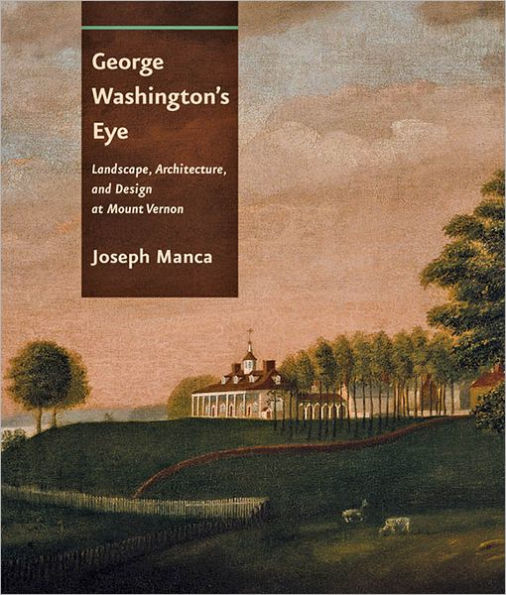Explore the beauty and history of Mount Vernon—and the inquisitive, independent mind of its famous architect and landscape designer.
Winner of the John Brinkerhoff Jackson Book Prize of the Foundation for Landscape Architecture
On the banks of the Potomac River, Mount Vernon stands, with its iconic portico boasting breathtaking views and with a landscape to rival the great gardens of Europe, as a monument to George Washington’s artistic and creative efforts. More than one million people visit Mount Vernon each year—drawn to the stature and beauty of Washington’s family estate.
Art historian Joseph Manca systematically examines Mount Vernon—its stylistic, moral, and historical dimensions—offering a complete picture of this national treasure and the man behind its enduring design. Manca brings to light a Washington deeply influenced by his wide travels in colonial America, with a broader architectural knowledge than previously suspected, and with a philosophy that informed his aesthetic sensibility.
Washington believed that design choices and personal character mesh to form an ethic of virtue and fulfillment and that art is inextricably linked with moral and social concerns. Manca examines how these ideas shaped the material culture of Mount Vernon.
Based on careful study of Washington’s personal diaries and correspondence and on the lively accounts of visitors to his estate, this richly illustrated book introduces a George Washington unfamiliar to many readers—an avid art collector, amateur architect, and leading landscape designer of his time.
Explore the beauty and history of Mount Vernon—and the inquisitive, independent mind of its famous architect and landscape designer.
Winner of the John Brinkerhoff Jackson Book Prize of the Foundation for Landscape Architecture
On the banks of the Potomac River, Mount Vernon stands, with its iconic portico boasting breathtaking views and with a landscape to rival the great gardens of Europe, as a monument to George Washington’s artistic and creative efforts. More than one million people visit Mount Vernon each year—drawn to the stature and beauty of Washington’s family estate.
Art historian Joseph Manca systematically examines Mount Vernon—its stylistic, moral, and historical dimensions—offering a complete picture of this national treasure and the man behind its enduring design. Manca brings to light a Washington deeply influenced by his wide travels in colonial America, with a broader architectural knowledge than previously suspected, and with a philosophy that informed his aesthetic sensibility.
Washington believed that design choices and personal character mesh to form an ethic of virtue and fulfillment and that art is inextricably linked with moral and social concerns. Manca examines how these ideas shaped the material culture of Mount Vernon.
Based on careful study of Washington’s personal diaries and correspondence and on the lively accounts of visitors to his estate, this richly illustrated book introduces a George Washington unfamiliar to many readers—an avid art collector, amateur architect, and leading landscape designer of his time.

George Washington's Eye: Landscape, Architecture, and Design at Mount Vernon
344
George Washington's Eye: Landscape, Architecture, and Design at Mount Vernon
344Related collections and offers

Product Details
| ISBN-13: | 9781421405612 |
|---|---|
| Publisher: | Johns Hopkins University Press |
| Publication date: | 09/01/2012 |
| Sold by: | Barnes & Noble |
| Format: | eBook |
| Pages: | 344 |
| File size: | 30 MB |
| Note: | This product may take a few minutes to download. |
| Age Range: | 18 Years |
